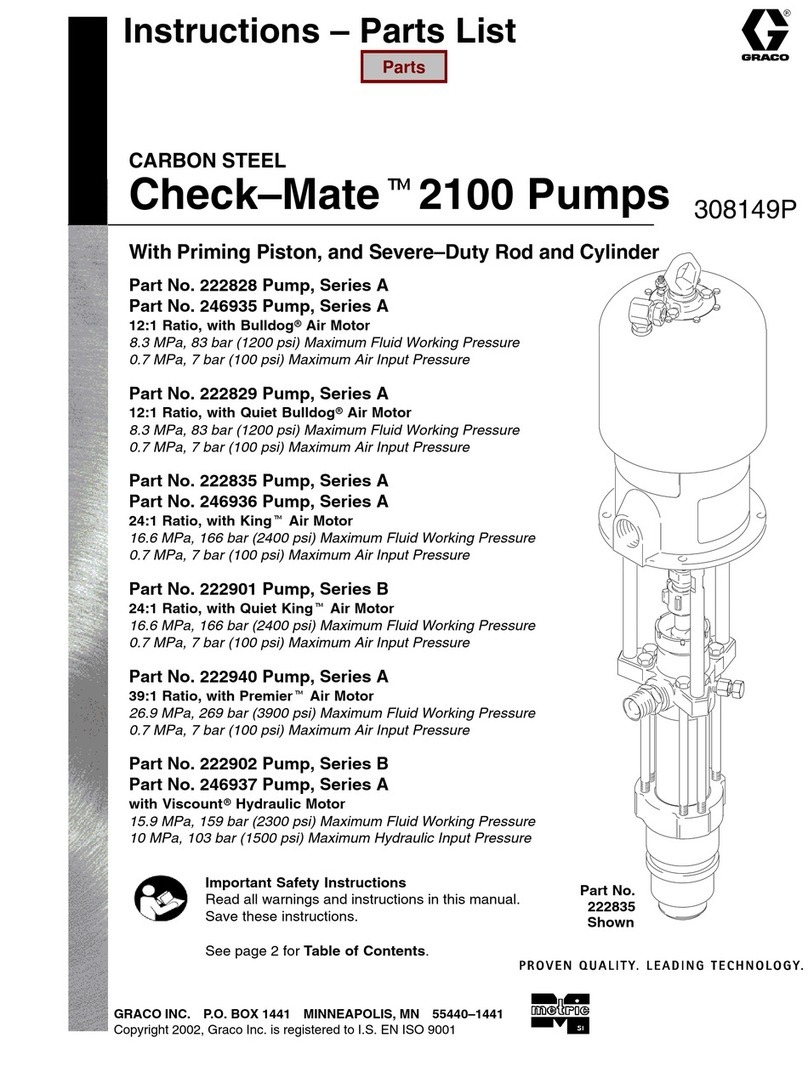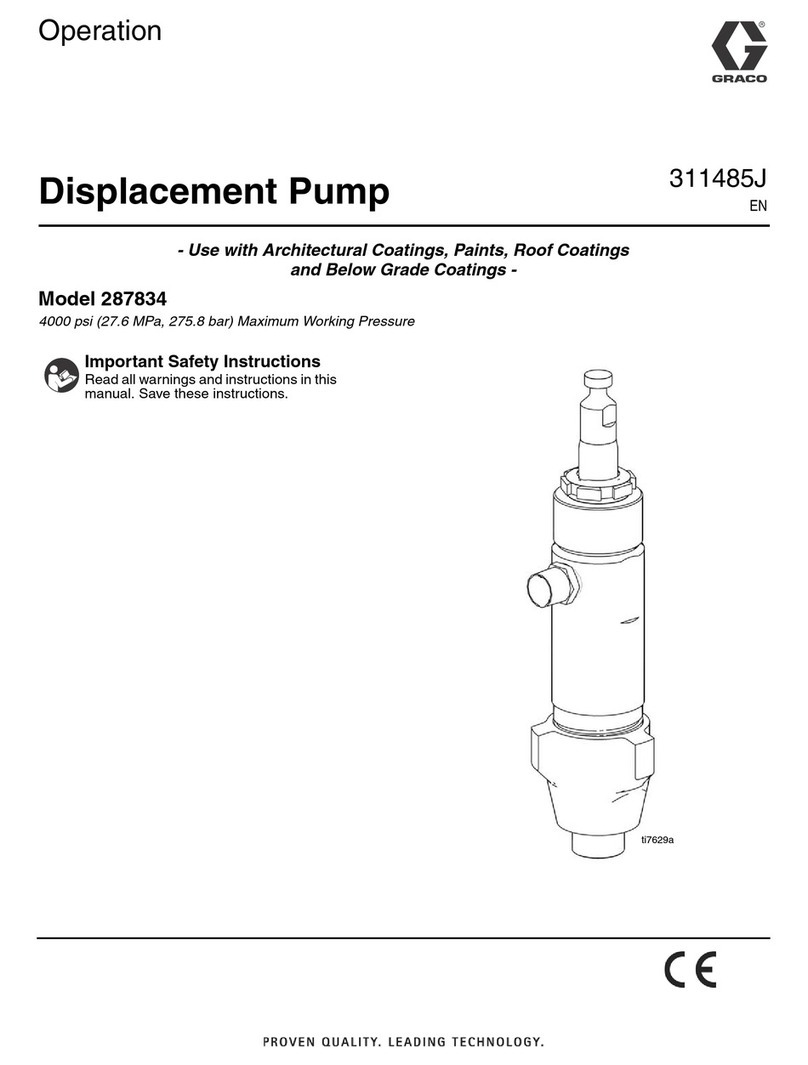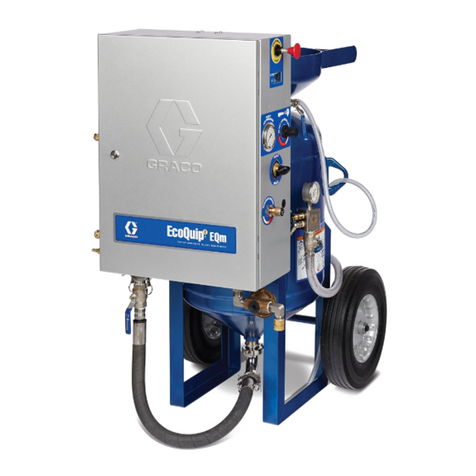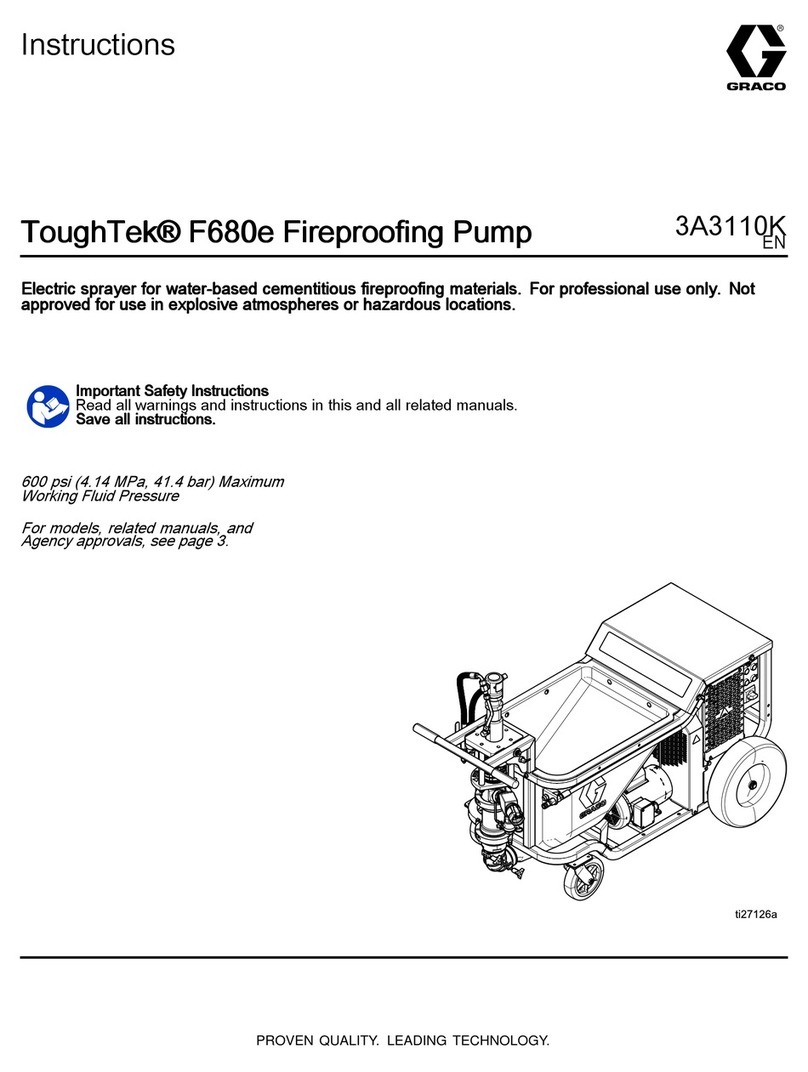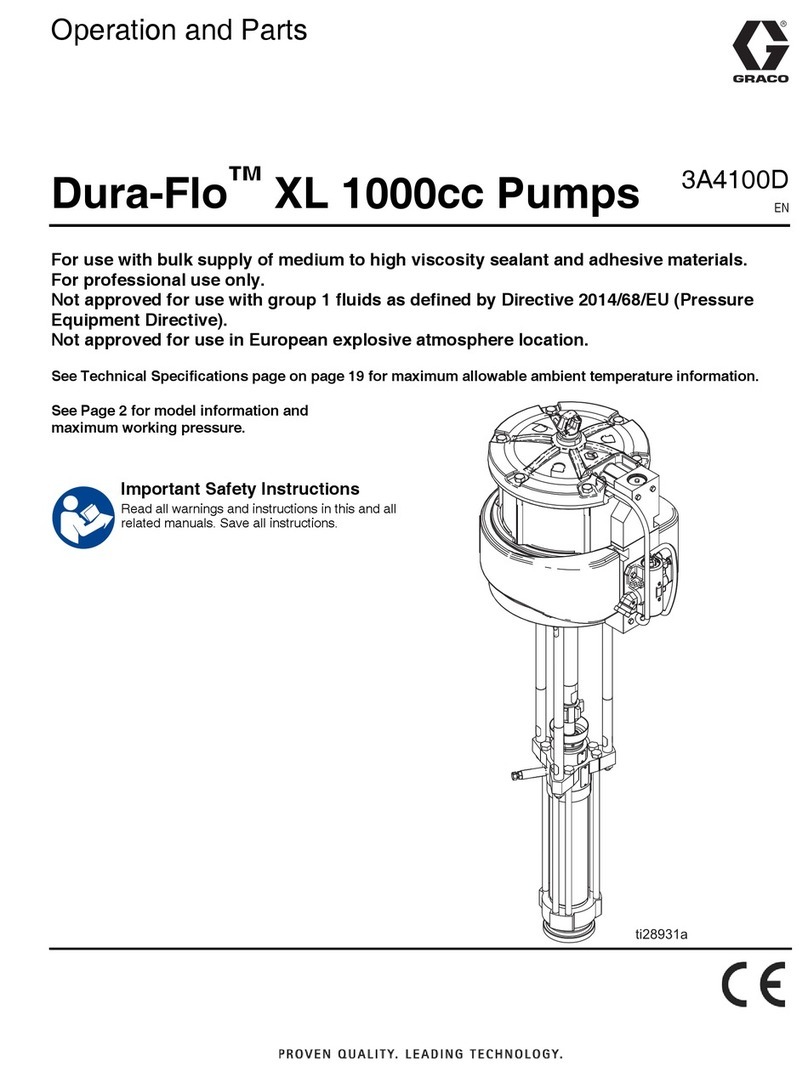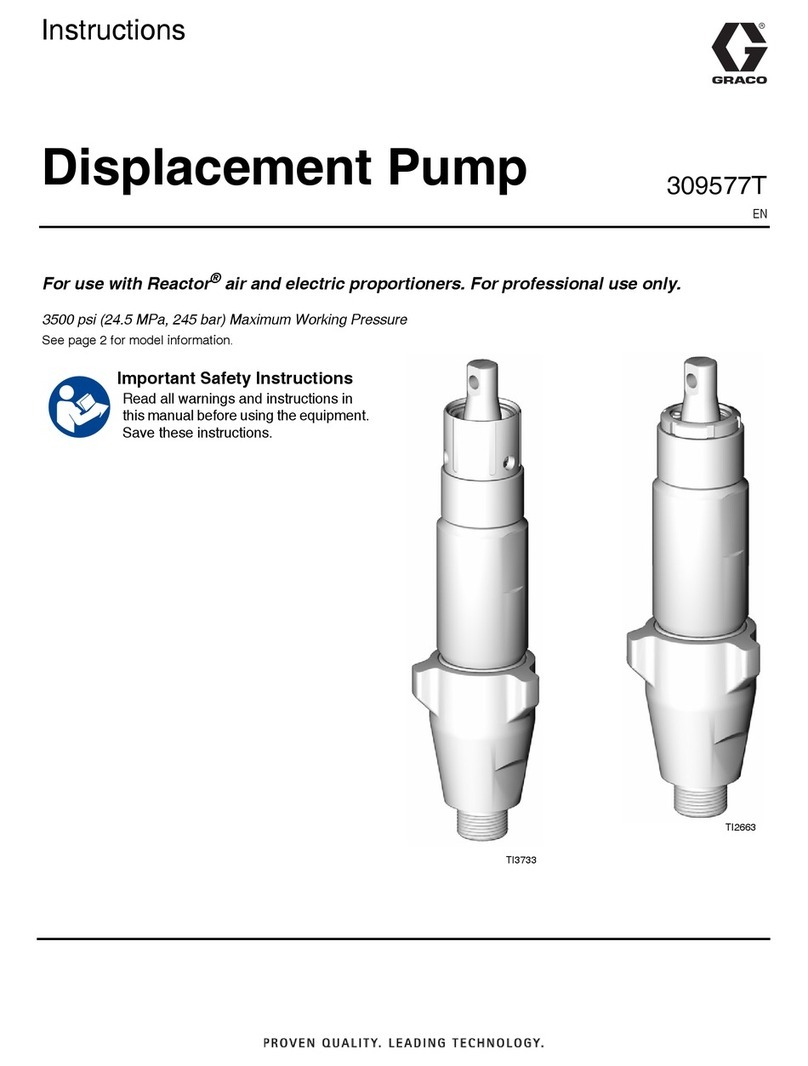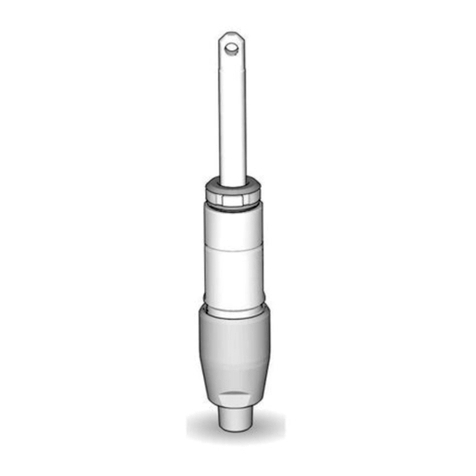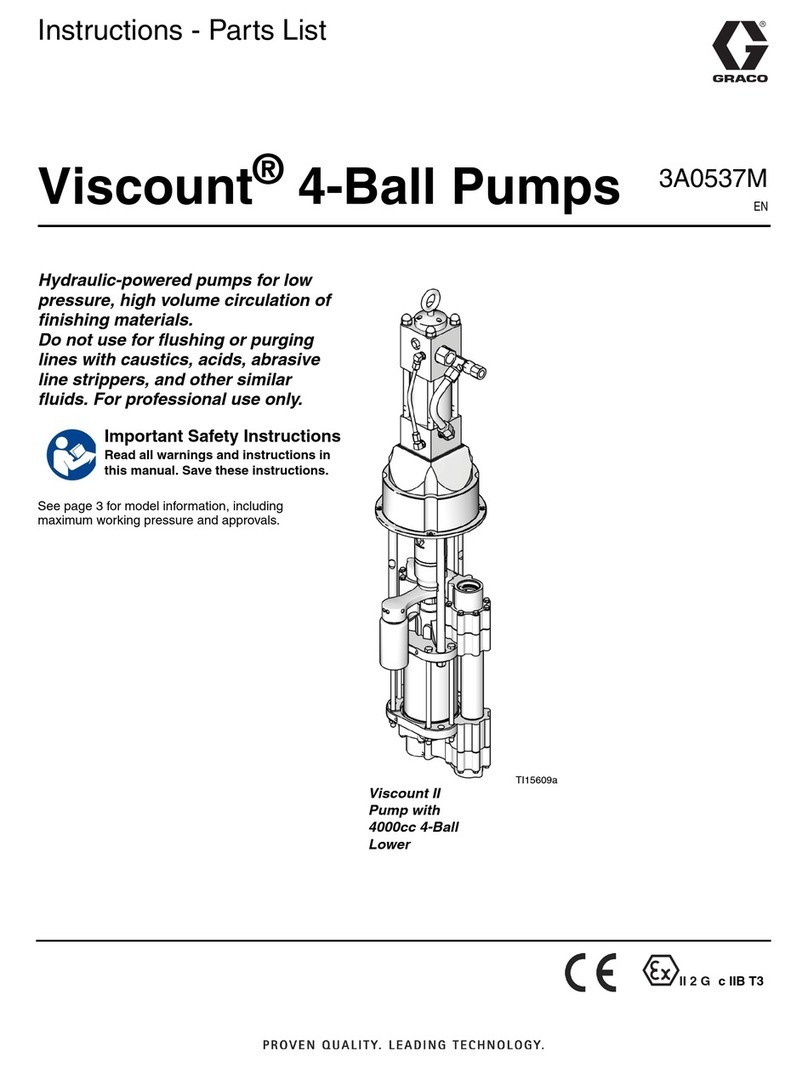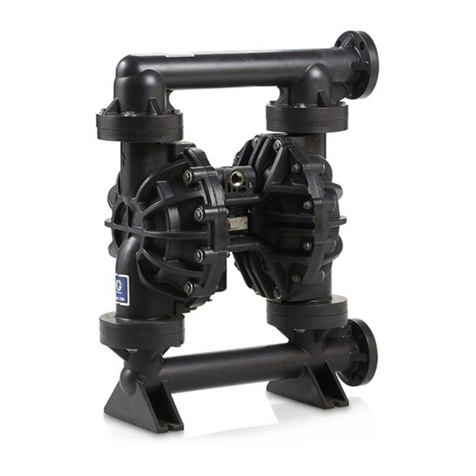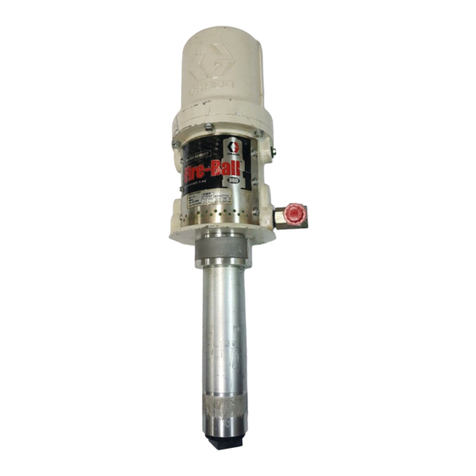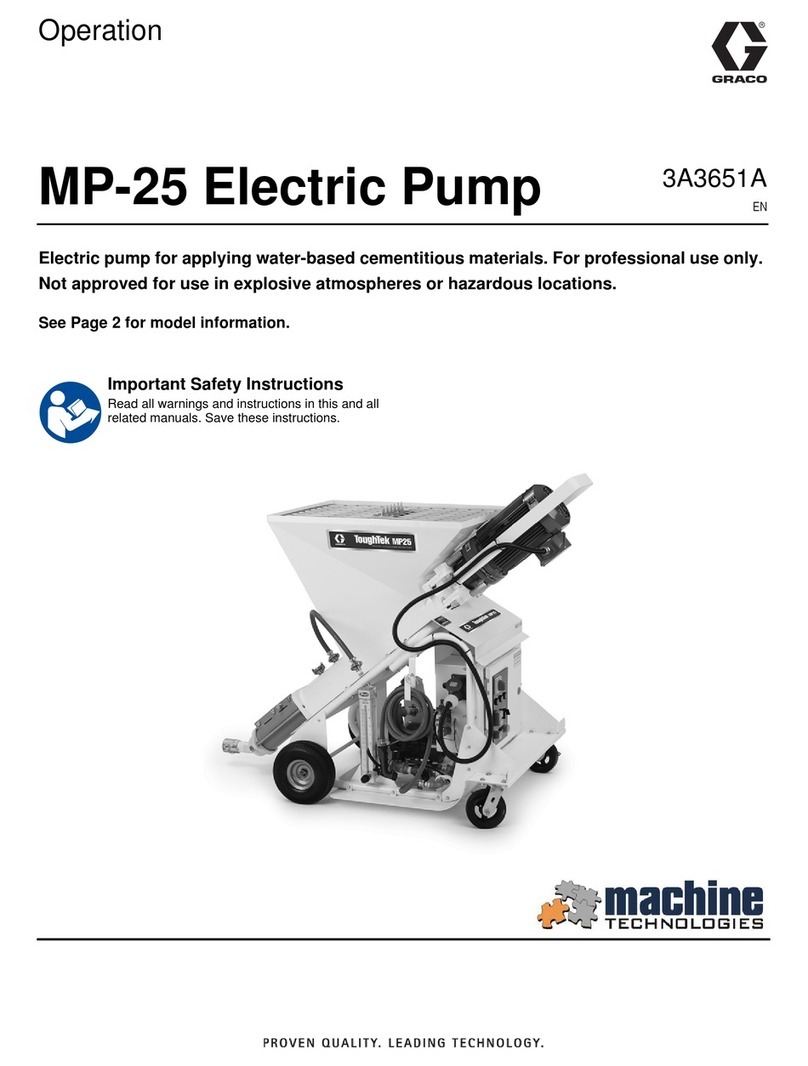
EQUIPMENT MISUSE HAZARD
General Safety
Any misuse of the spray equipment or accessories, such as
overpressurizing, modifying parts, using incompatible fluids,
or using worn or damaged parts, can cause them to rupture
and result in fluid injection or other serious bodily injury, fire,
explosion or property damage.
NEVER alter or modify any part of this equipment; doing so
could cause it to malfunction.
CHECK all spray equipment regularly and repair or replace
worn or damaged parts immediately.
Read and follow the fluid and solvent manufacturer’s recom-
mendations for use of protective clothing and equipment.
System Pressure
The 4-l/2:1 ratio pump can develop 450 psi (31 bar) MAX-
IMUM WORKING PRESSUREat 100 psi (7 bar) maximum in-
coming air pressure.
The 12:l ratio pump can develop 7200 psi (83 bar) MAX-
IMUM WORKING PRESSURE at 100 psi (7 bar) maximum in-
coming air pressure.
The 23:l ratio pump can develop 2300 psi (15.9 bar) MAX-
IMUM WORKING PRESSUREat 100 psi (7 bar) maximum in-
coming air pressure.
Be sure that all spray equipment and accessories are rated to
withstand the maximum working pressure of this pump. DO
NOT exceed the maximum working pressure of any compo-
nent or accessory used in the system.
Fluid Compatibility
BE SURE that all fluids and solvents used are chemically com-
patible with the wetted parts shown in the TECHNICAL DATA
on the back cover. Always read the fluid manufacturer’s
literature before using them in this pump.
F/f?E OR EXPLOSION HAZARD
Static electricity is created by the flow of fluid through the
pump and hose. If every part of the spray equipment is not
properly grounded, sparking may occur, and the system may
become hazardous. Sparking may also occur when plugging
in or unplugging a power supply cord. Sparks can ignite fumes
from solvents and the fluid being sprayed, dust particles and
other flammable substances, whether you are spraying in-
doors or outdoors, and can cause a fire or explosion and
serious bodily injury and property damage. Do not plug in or
unplug any power supply cords in the spray area when there is
any chance of igniting fumes still in the air.
If you experience any static sparking or even a slight shock
while using this equipment, STOP SPRAYING IMME-
DIATELY. Check the entire system for proper grounding. Do
not use the system again until the problem has been identified
and corrected.
Grounding
To reduce the risk of static soarkina, nround the Dump and all
other spray equipment used or l&%ed in the’ spray area.
CHECK your local electrical code for detailed grounding in-
structions for your area and type of equipment. BE SURE to
ground all of this spray equipment:
1. Pump: by connecting a ground wire and clamp to a true
earth ground. See the procedure on page 4.
2. Air and fluid hoses: use only grounded hoses with a max-
imum of 500 feet (150 m) combined hose lenath to en-
sure grounding continuity. Refer to Hose Giounding
Continuity, above.
HOSE SAFETY
High pressure fluid in the hoses can be very dangerous. If the
hose develops a leak, split or rupture due to any kind of wear,
damage or misuse, the high pressure spray emitted from it can
cause a fluid injection injury or other serious bodily injury or
property damage.
ALL FLUID HOSES MUST HAVE SPRING GUARDS ON
BOTH ENDS! The sorina auards helo orotect the hose from
kinks or bends at or &OS; 6 the cou&g which can result in
hose rupture.
TIGHTEN all fluid connections securely before each use. High
pressure fluid can dislodge a loose coupling or allow high
pressure spray to be emitted from the coupling.
NEVER use a damaged hose. Before each use, check the en-
tire hose for cuts, leaks, abrasion, bulging cover, or damage or
movement of the hose couplings. If any of these conditions
exist, replace the hose immediately. DO NOT try to recouple
high pressure hose or mend it with tape or any other device. A
repaired hose cannot contain the high pressure fluid.
HANDLE AND ROUTE HOSES CAREFULLY. Do not pull on
the hoses to move the equipment. Do not use fluids which are
not compatible with the inner tube and cover of the hose. DO
NOT expose Grace hose to temperatures above 1WF W°C)
or below -40°F (-4O“C).
Hose Grounding Continuity
Proper hose grounding continuity is essential to maintaining a
grounded spray system. Check the electrical resistance of your
air and fluid hoses at least once a week. If your hose does not
have a tag on it which specifies the maximum electrical
resistance, contact the hose supplier or manufacturer for the
maximum resistance limits. Use a resistance meter in the ap-
propriate range for your hose to check the resistance. If the
resistance exceeds the recommended limits, replace it im-
mediately. An ungrounded or poorly grounded hose can make
your system hazardous. Also, read FIRE OR EXPLOSION
HAZARD, below.
3.
4.
5.
6.
7.
8.
Spray gun: obtain grounding through the connection to a
properly grounded fluid hose and pump.
Air compressor: according to the manufacturer’s recom-
mendations.
Fluid supply container: according to the local code.
Object being sprayed: according to the local code.
All solvent pails used when flushing: according to the
local code. Use only metalpails which are conductive. Do
not place the pail on a nonconductive surface, such as
paper or cardboard, which interrupts grounding
continuity.
To maintain grounding continuity when flushing or reiiev-
ingpressure, always hold a metal part of the gun firmly to
the side of a grounded metal pail, then trigger the gun.
Flushing Safety
Before flushina, be sure the entire system and flushina pails
are properly giounded. Refer to Grounding, to the ‘left.
Follow the Pressure Relief Procedure on oaoe 2. and
remove the spray tip from the gun. Always use ihe lbwest
possible fluid pressure, and maintain firm metal-to-metal con-
tact between the gun and a grounded metal pail during
flushing to reduce the risk of fluid injection injury, static spark-
ing and splashing.
IMPORTANT
United States Government safety standards have been adopted under the Occupational Safety and Health Act. These standards-par-
ticularly the General Standards, Part 1910, and the Construction Standards, Part 1926-should be consulted.
307-610
3
